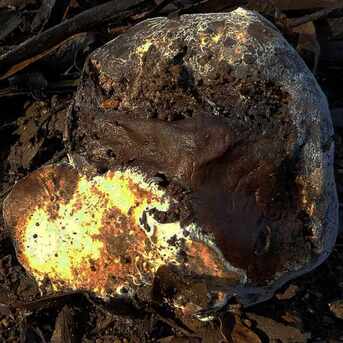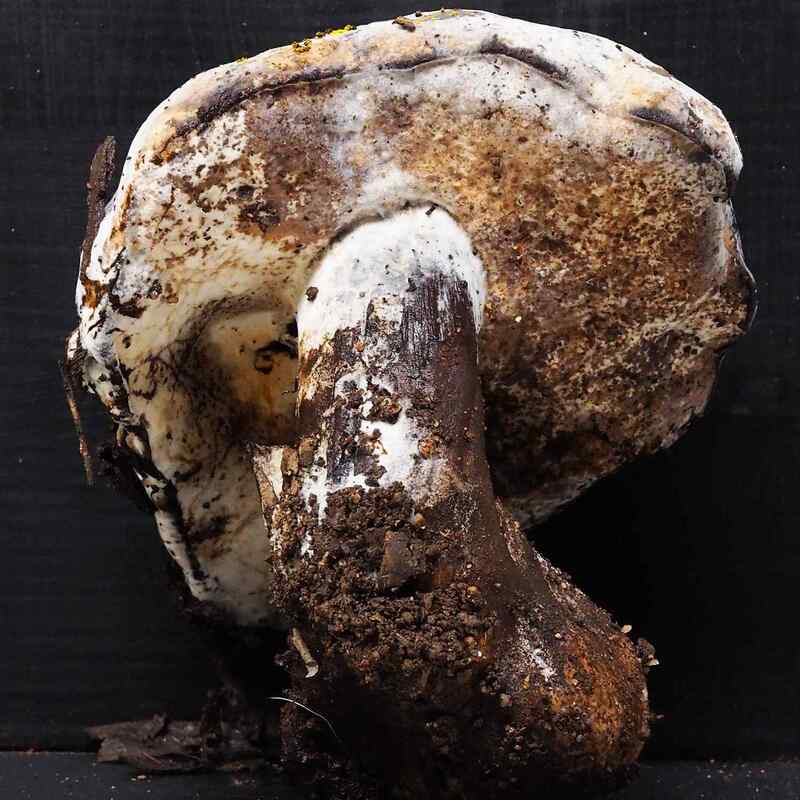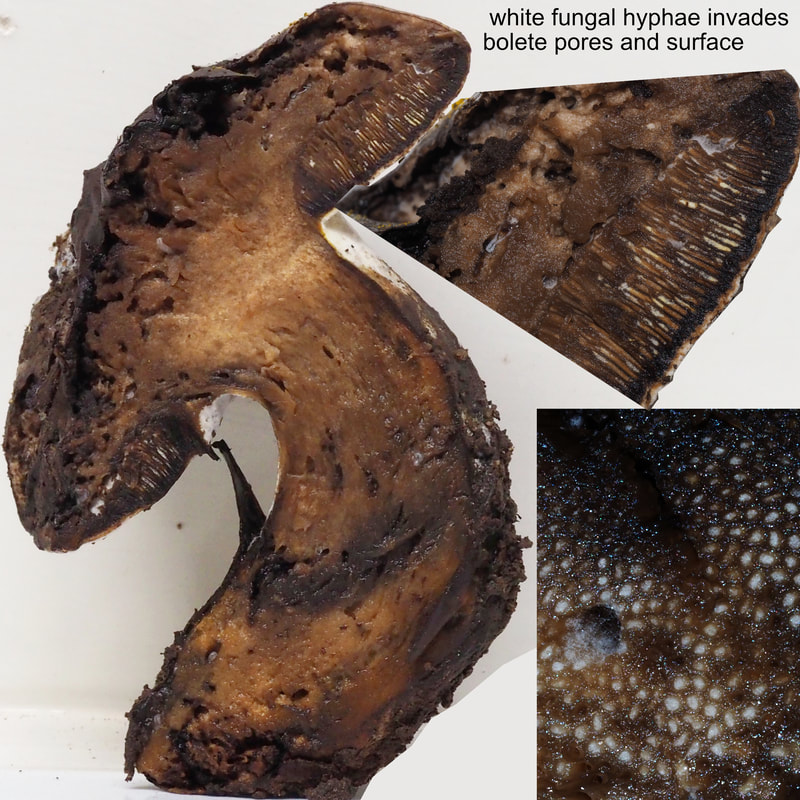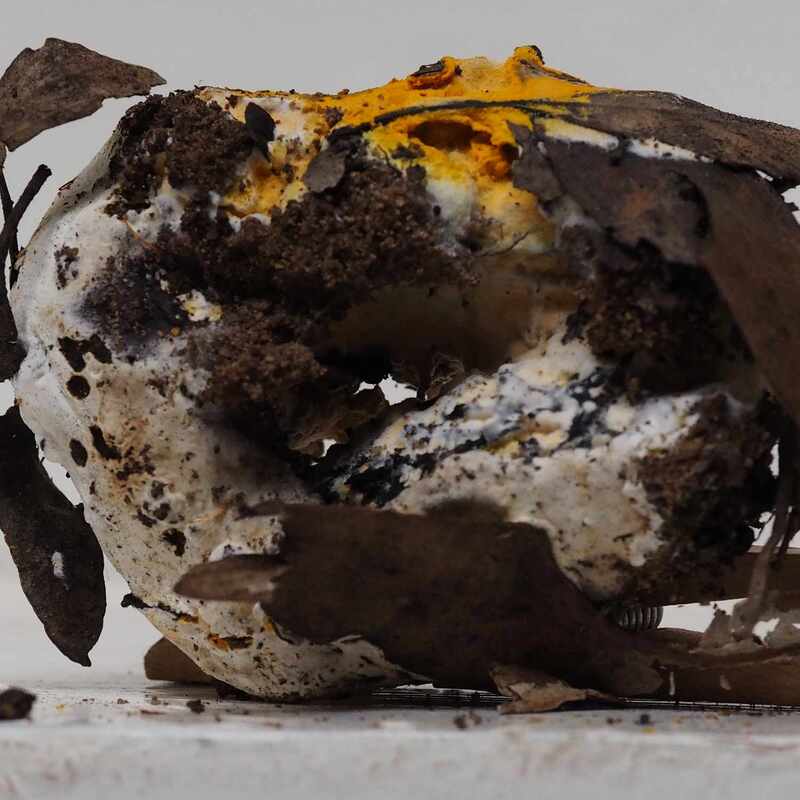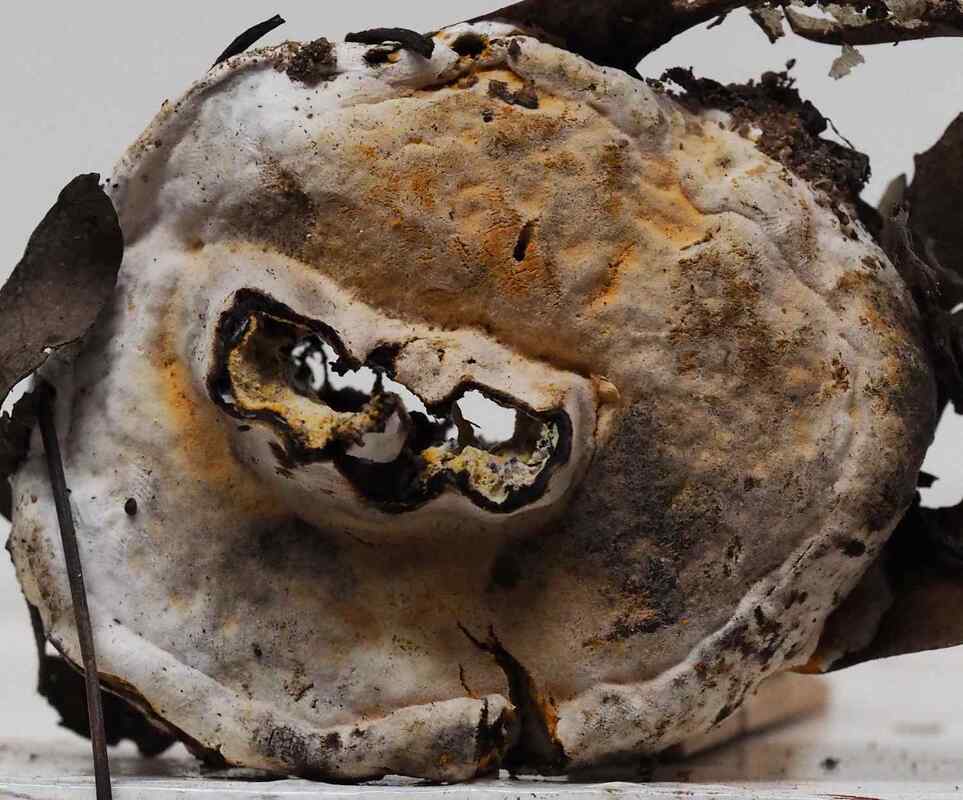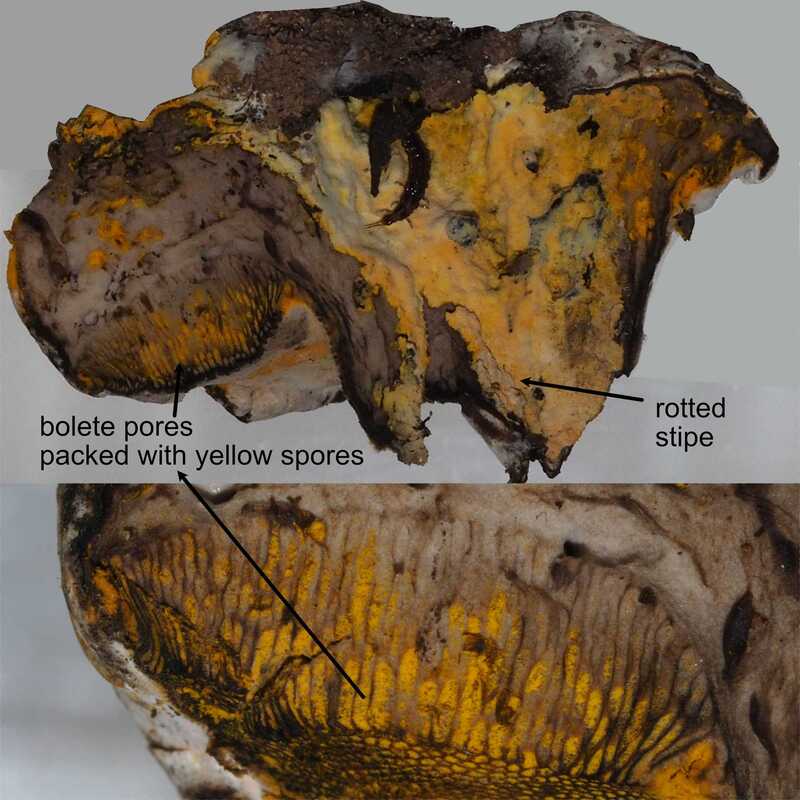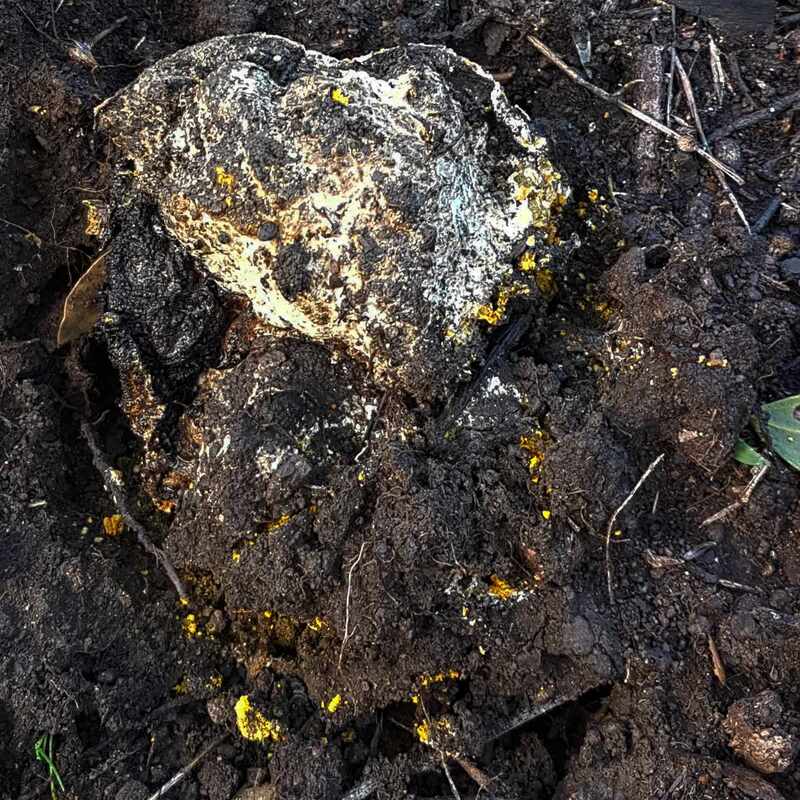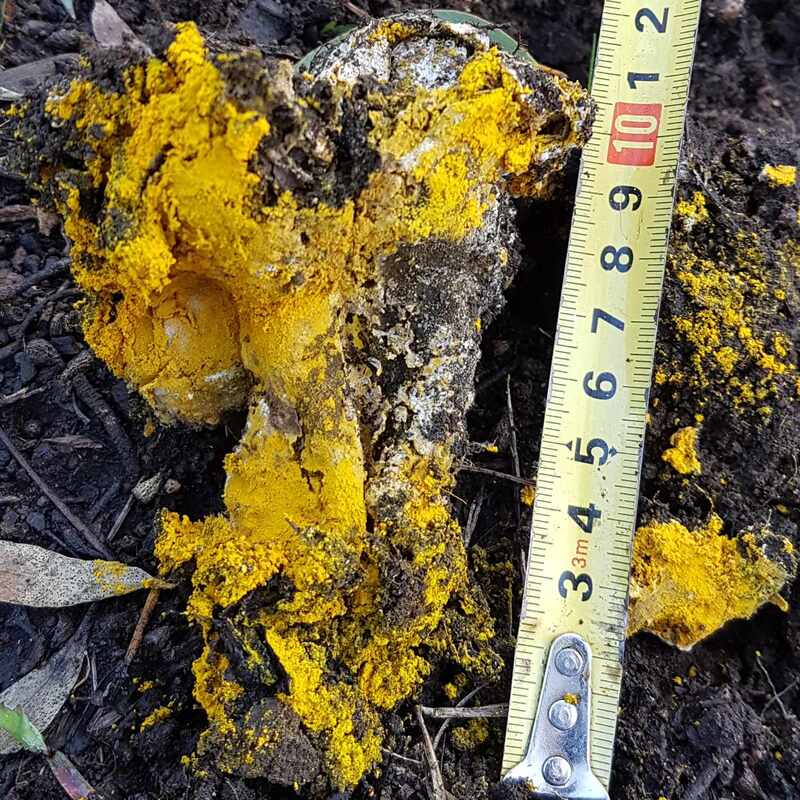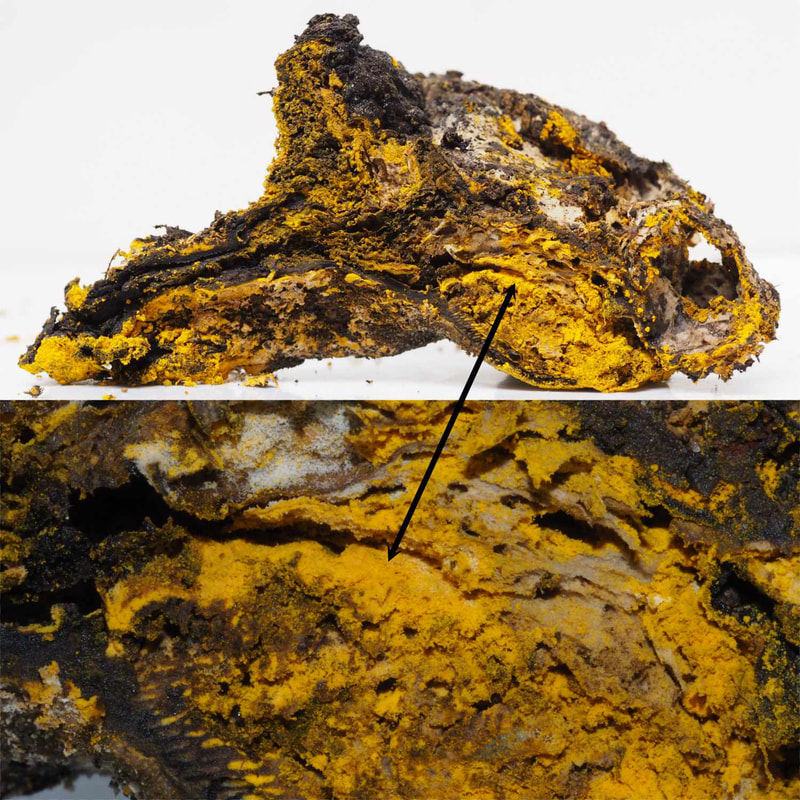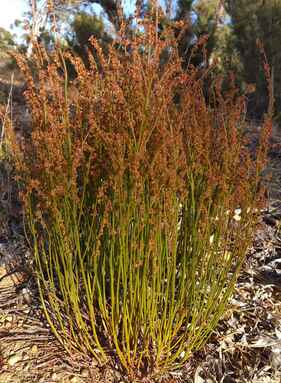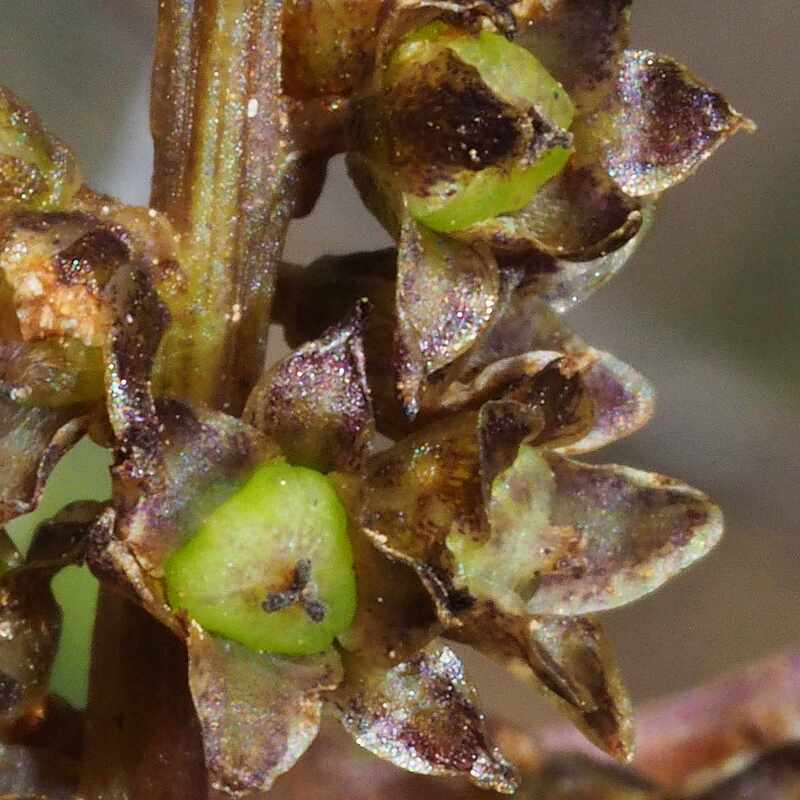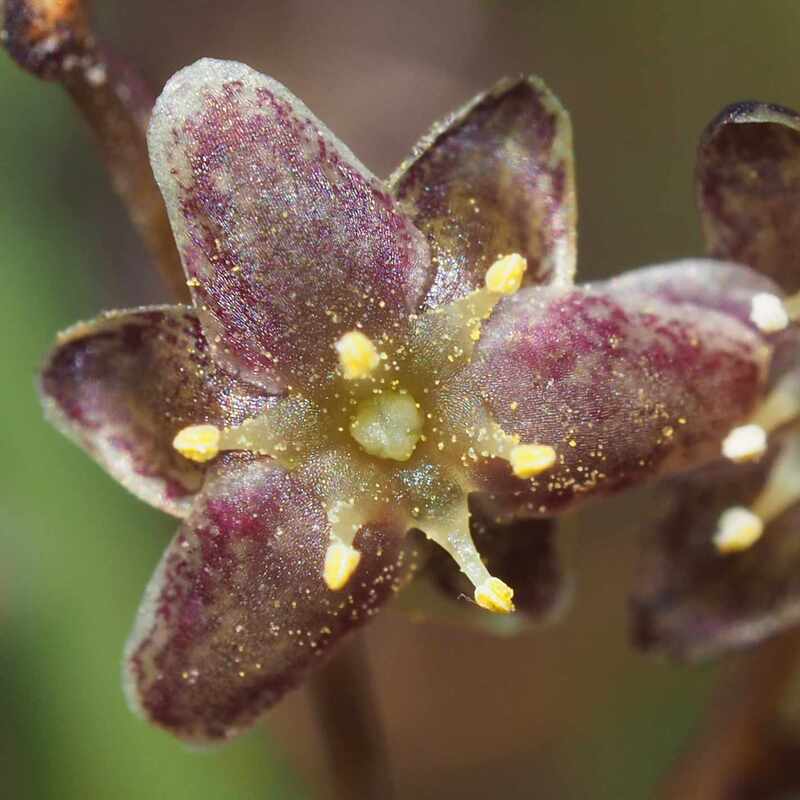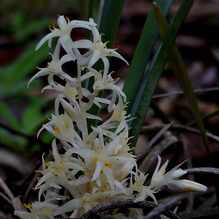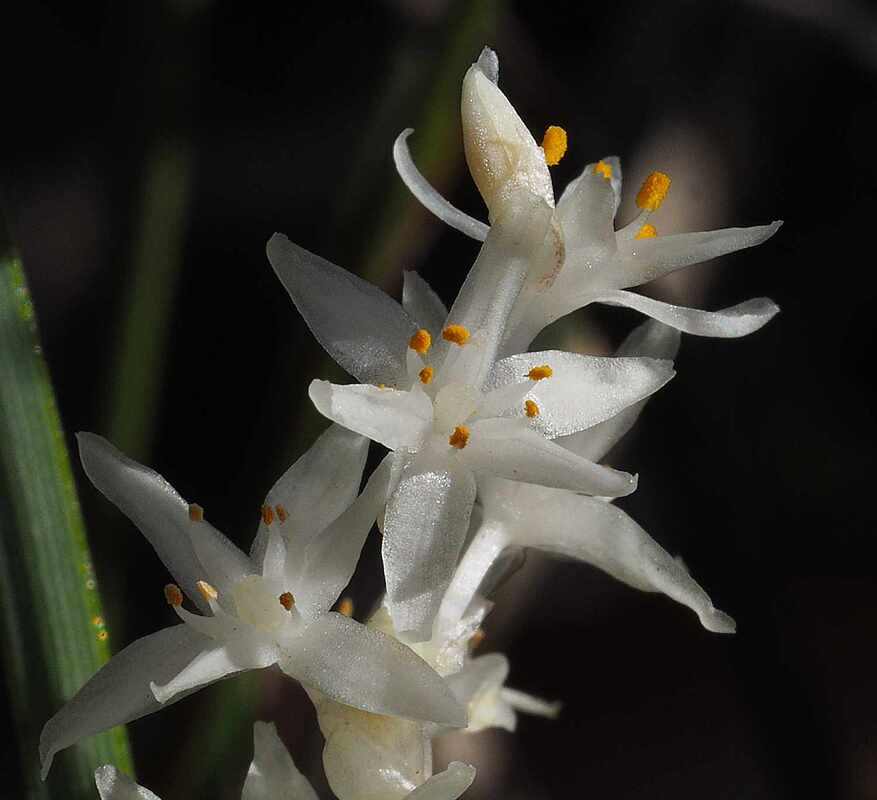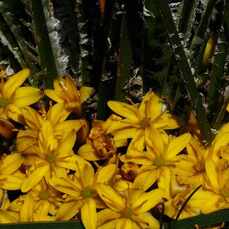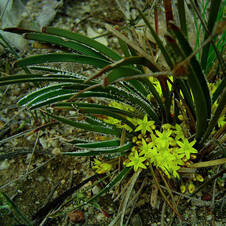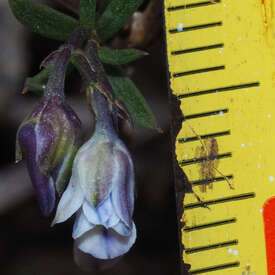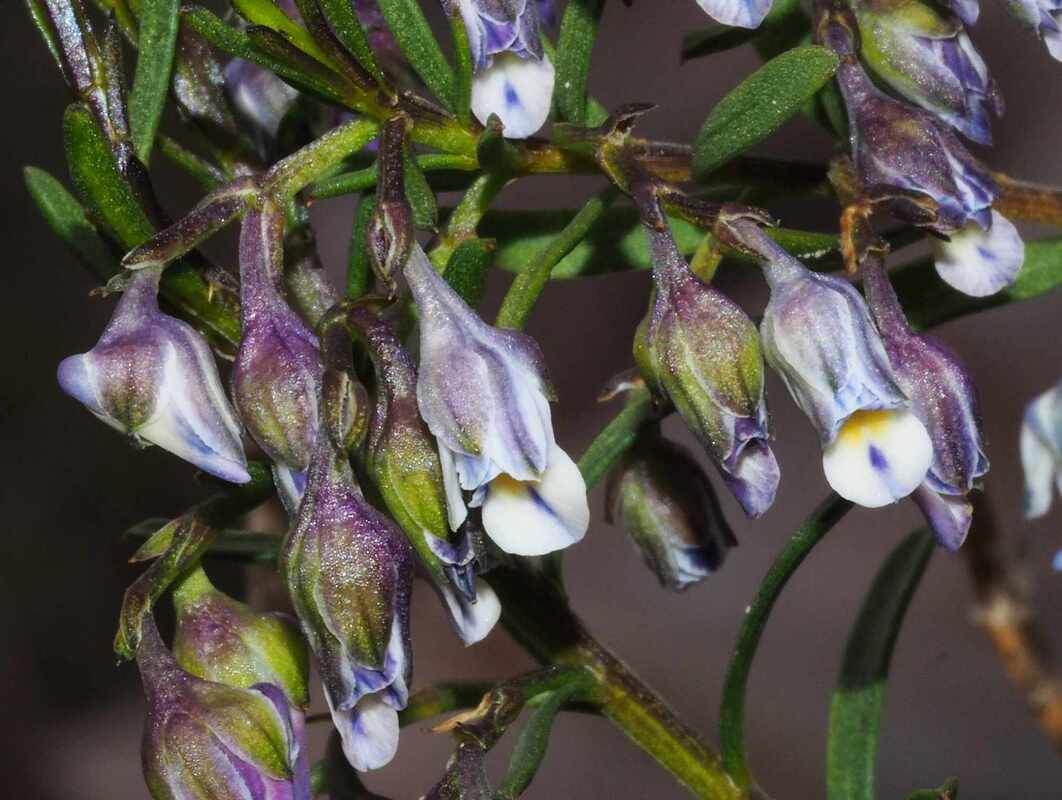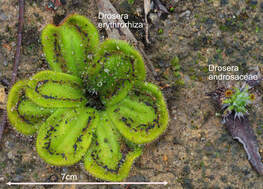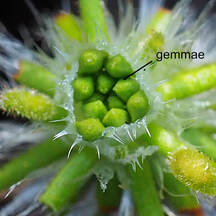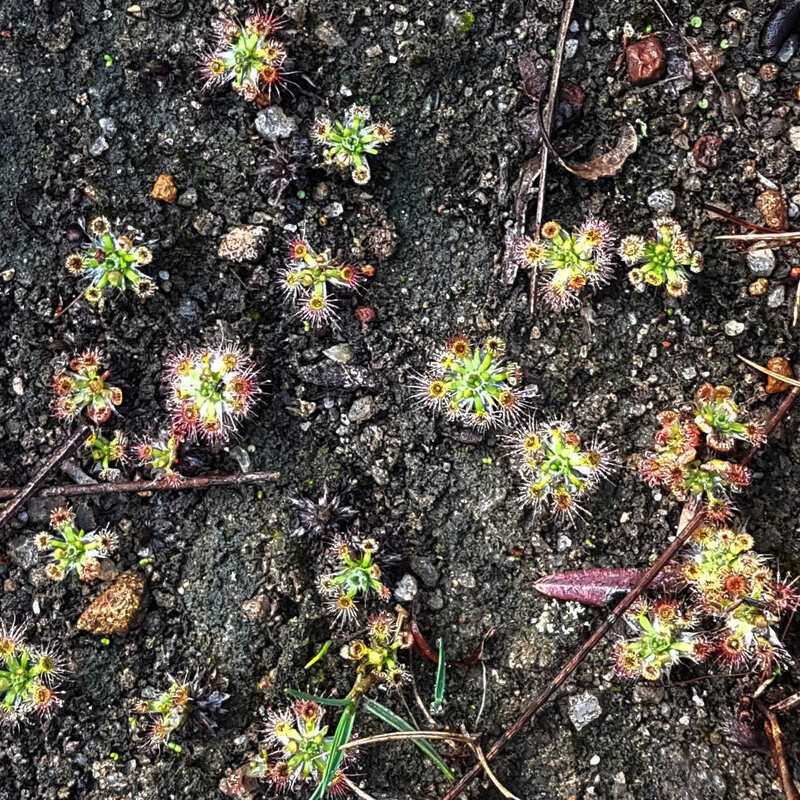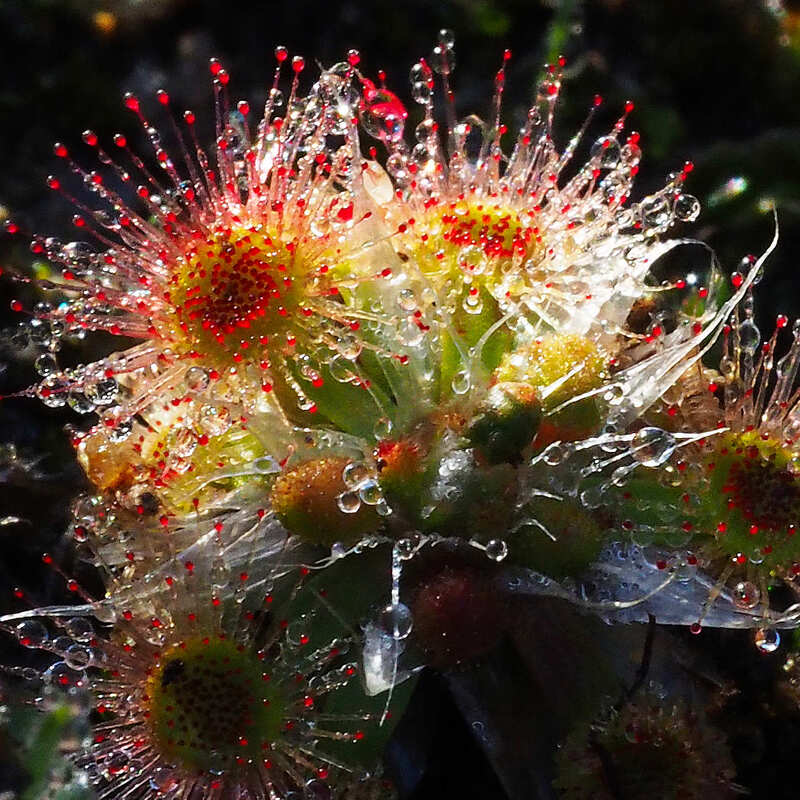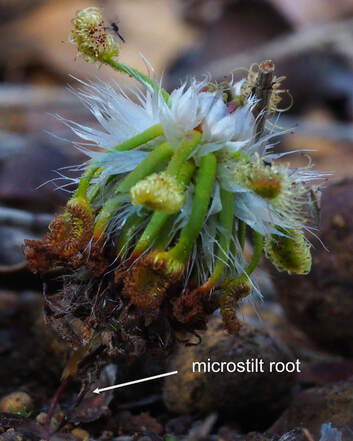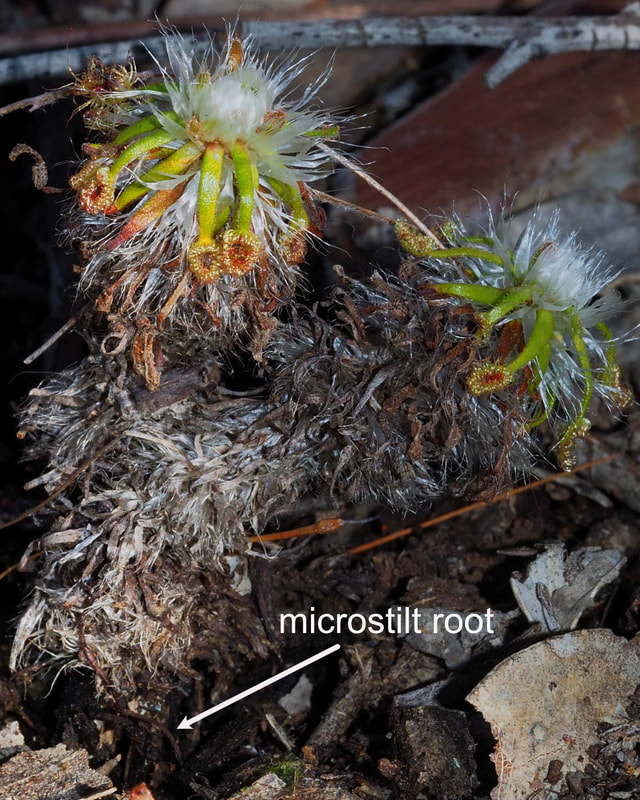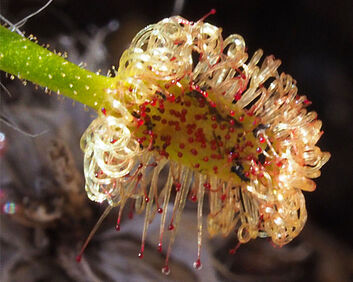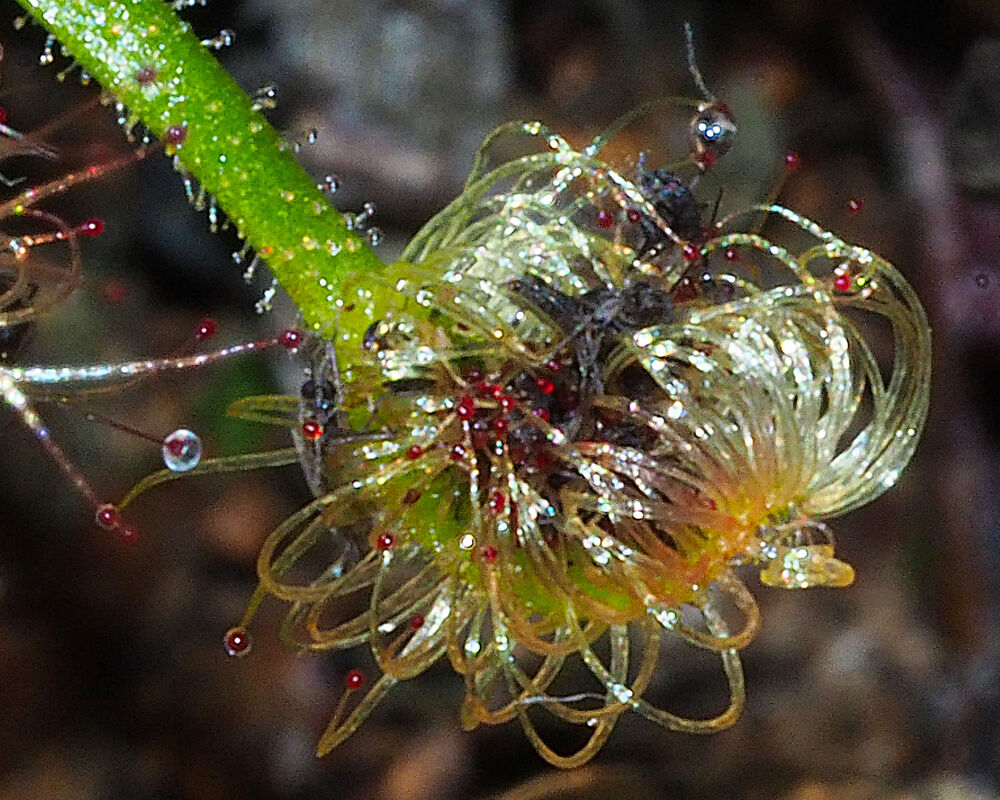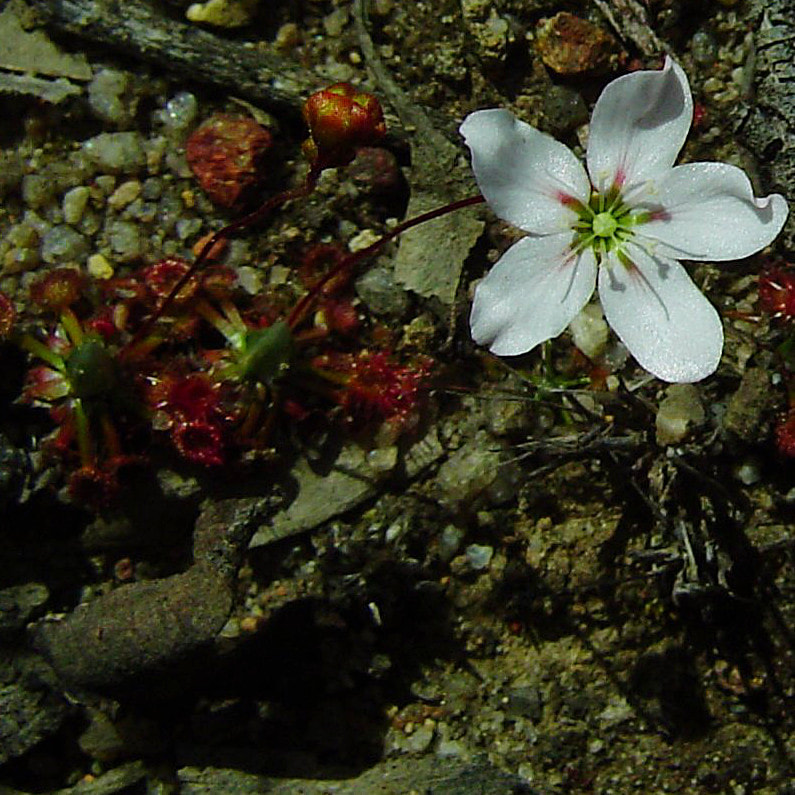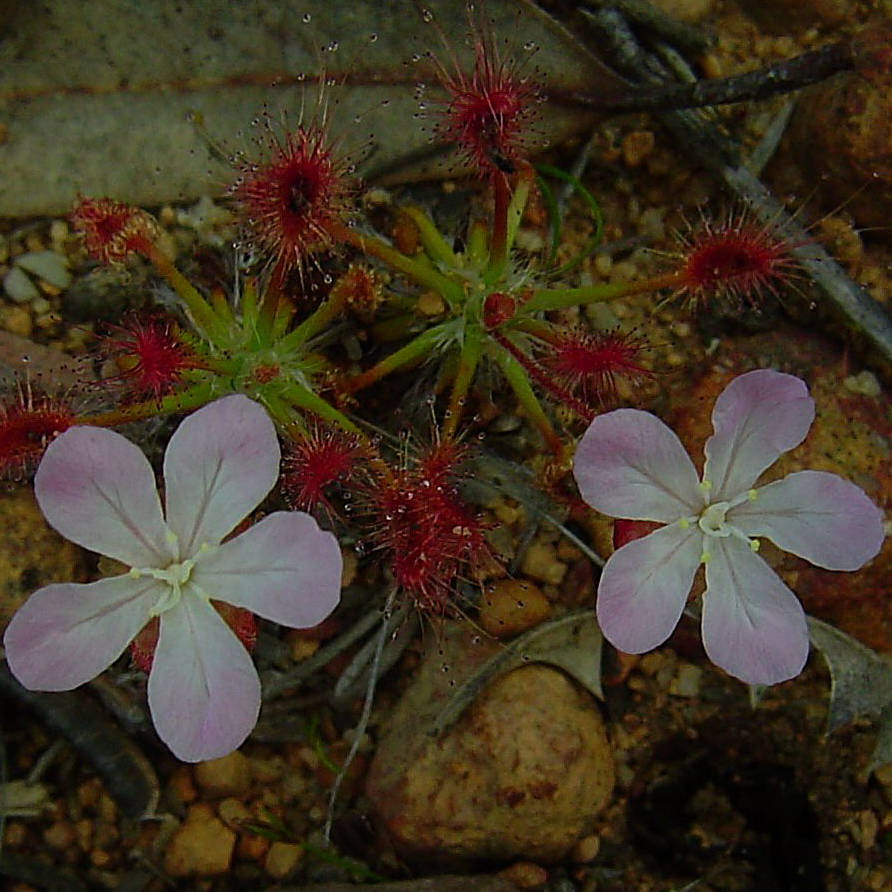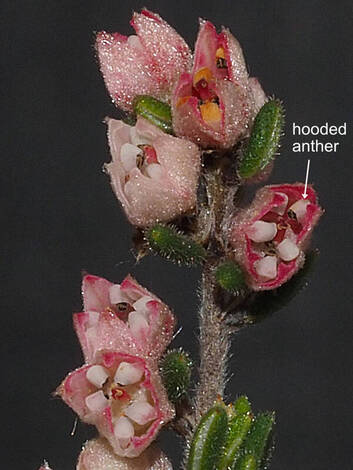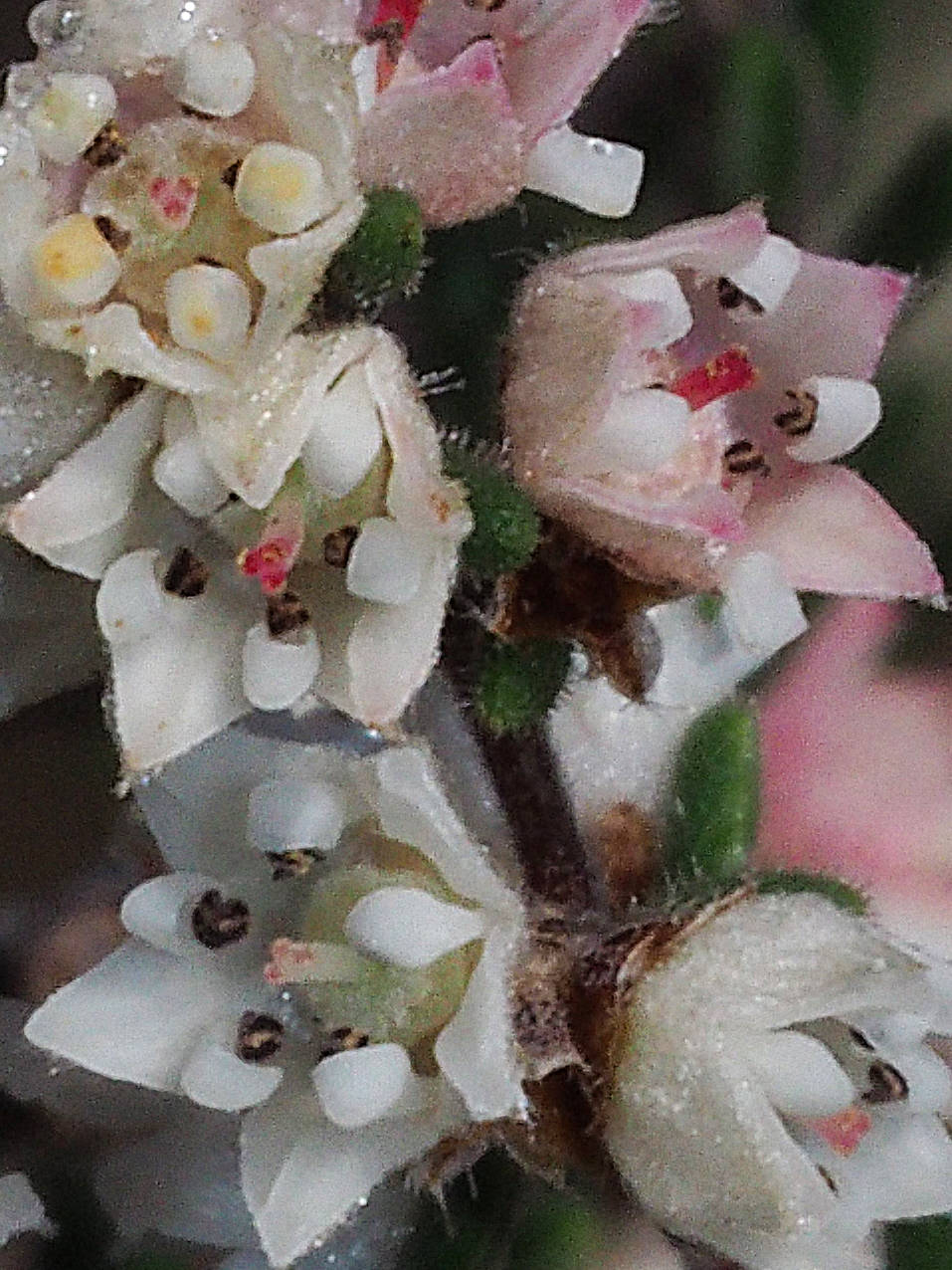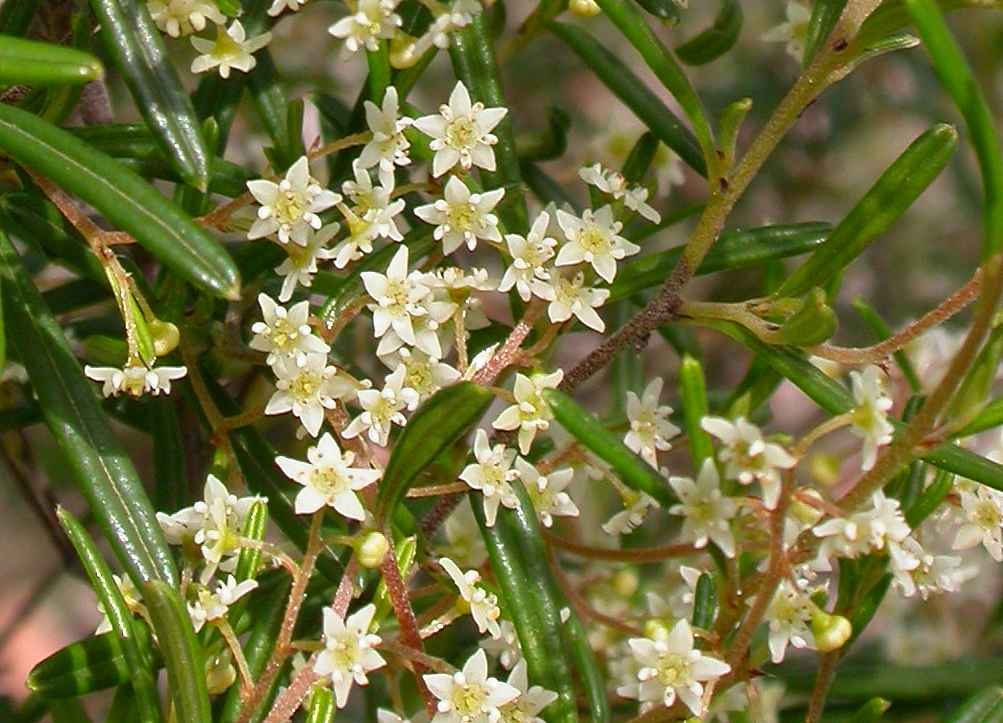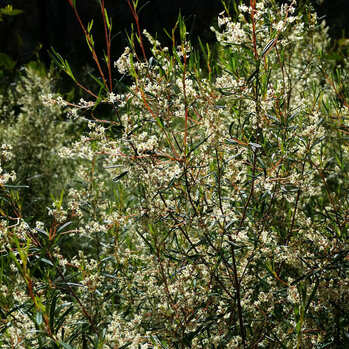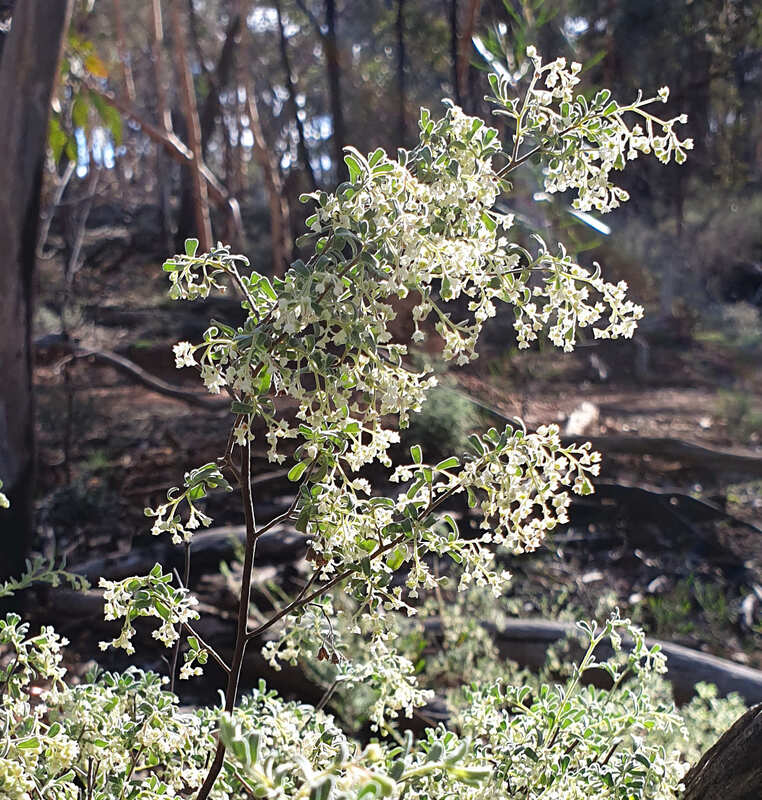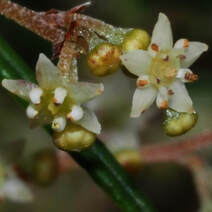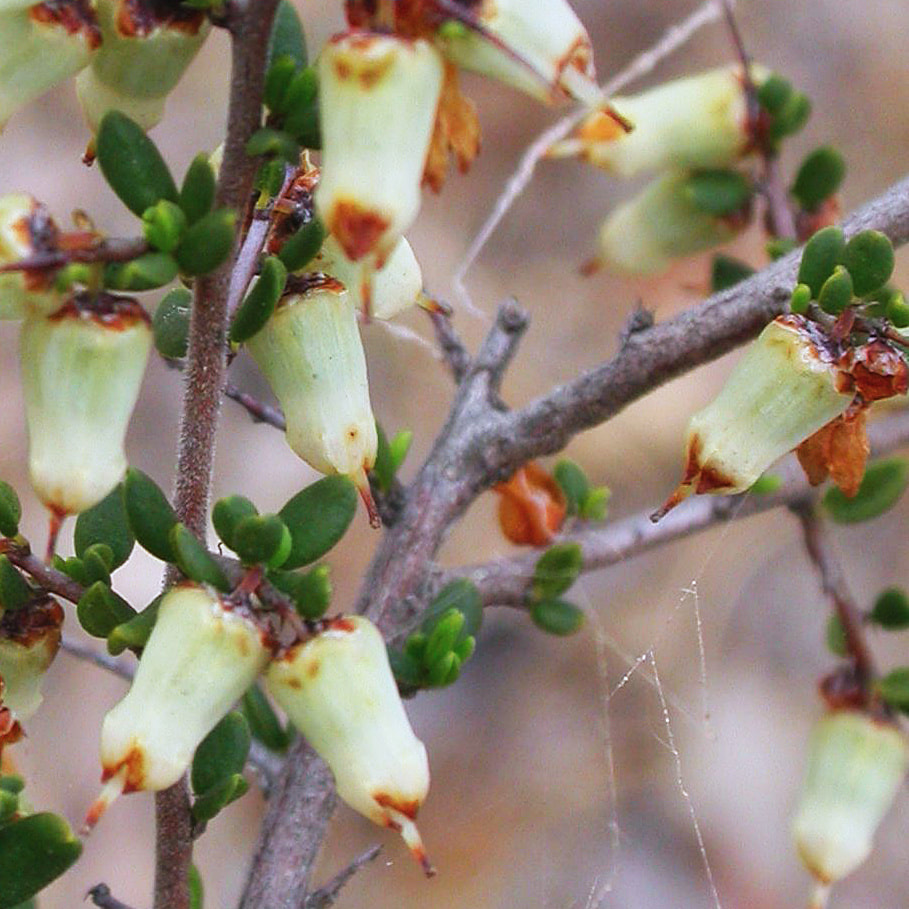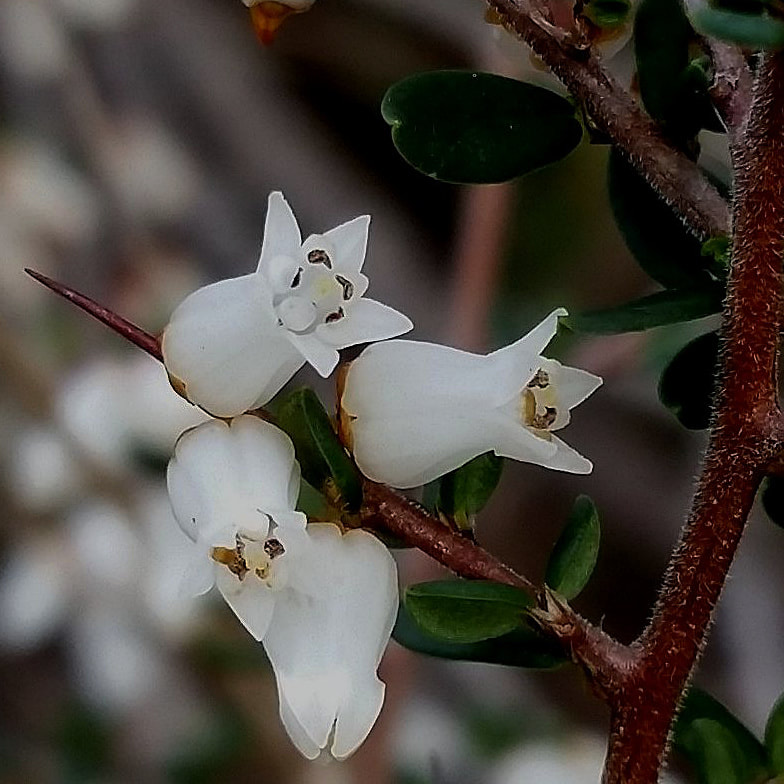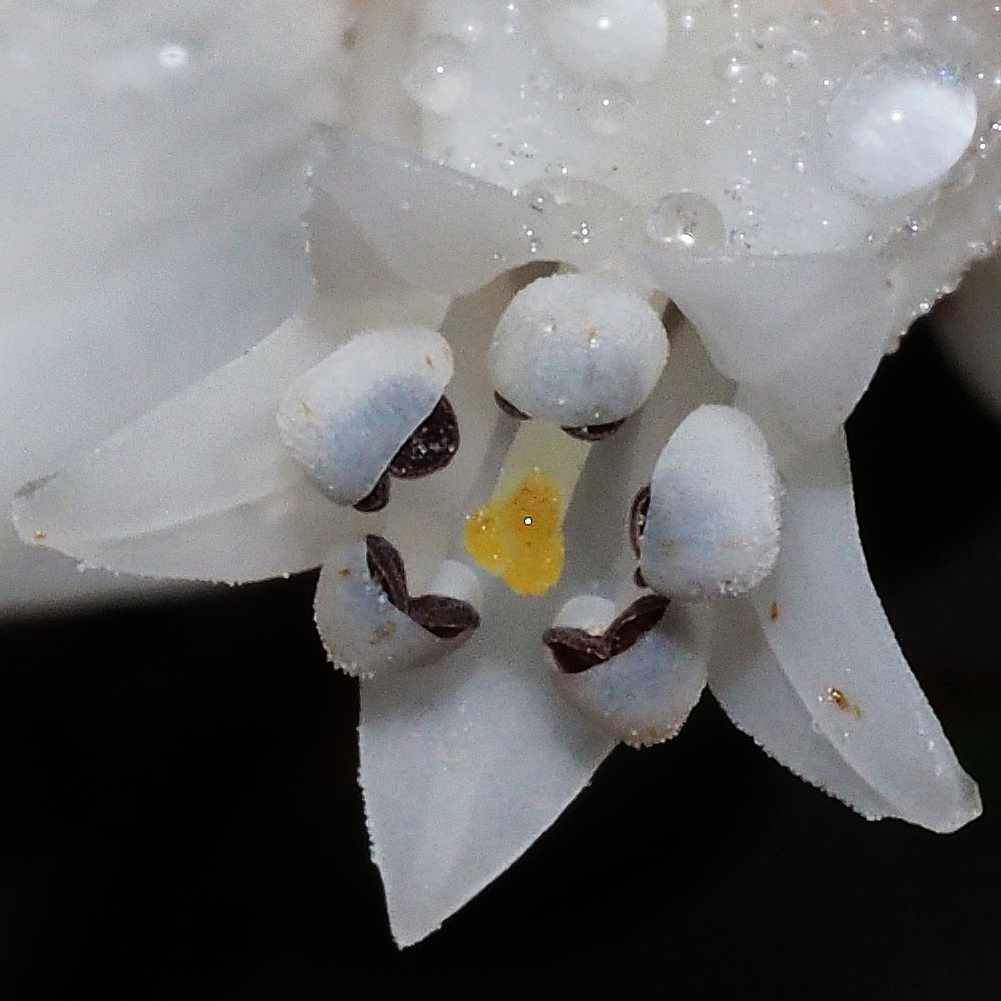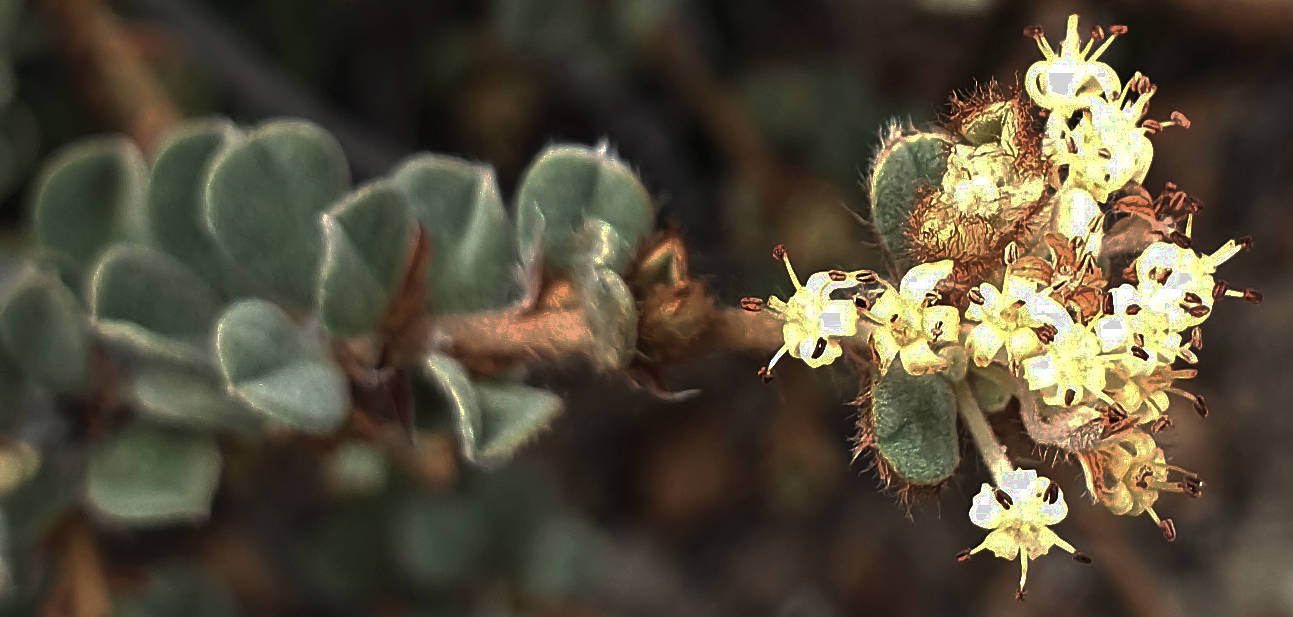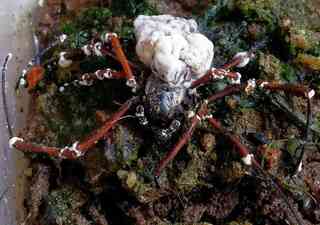 Fungus emerging from dead spider
Fungus emerging from dead spider A chance discovery of a mass of brilliant yellow spores erupting from the ground led me to the interesting world of mycotrophic fungi – fungi that parasitise other fungi. These are common in parts of the world but only one is listed in WA. This is Hypomyces chrysospermus, ominously called the bolete destroyer, which is an ascomycete fungus.
Ascomycetes generally have small fruiting bodies that are frequently disc or rod-shaped. They are most commonly seen as the small fruiting discs on lichens, where fungi have an association with single celled algae.
Cordyceps genus ascomycetes gruesomely parasitise insects and spiders like the golden orb weaver I found in Foxes Lair. Cordyceps affects a caterpillar’s brain, inducing it to climb up a stem. A Cordyceps fruiting body then grows out of the insect’s head where its spores are spread. (delightful!).
 Salmon gum bolete after rain
Salmon gum bolete after rain Three specimens below show increasing stages of infection.
The least affected bolete below had a Hypomyces white powdery coat, except for a small unaffected area on the top of the cap.
Fungus fly maggots normally start eating these boletes as they have reached full size but had already tunnelled through most of this specimen (probably because it was parasitised).
Hypomyces has three stages of spore production. The first 2 asexual stages have white and then gold spores. The last sexual stage has minute colourless flasks. White Hypomyces hyphae containing white asexual spores has invaded maggot holes and pores of the bolete.
The cross section shows that most bolete tissue has been replaced by yellow Hypomyces hyphae and spores.
A casual observer would think that they had found a yellow puffball at its powdery phase.
The bolete has been well and truly destroyed!
